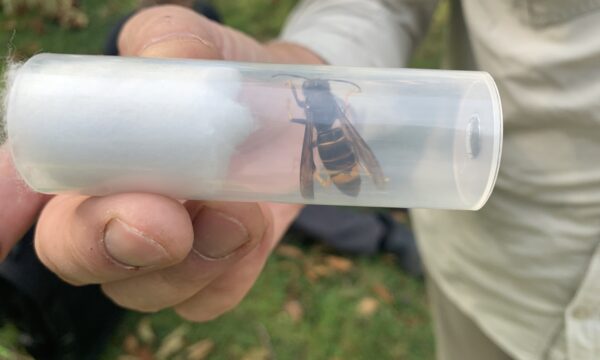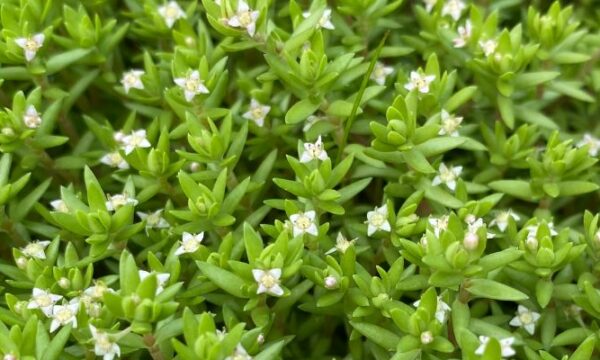 According to new research, scientists found that a number of invasive alien plant species initially introduced as ornamental plants at tourism facilities are now spreading rapidly throughout the Serengeti-Mara ecosystem, posing a major threat to wildlife, including the annual wildebeest and zebra migration as well as a range of other plant and animal species.
According to new research, scientists found that a number of invasive alien plant species initially introduced as ornamental plants at tourism facilities are now spreading rapidly throughout the Serengeti-Mara ecosystem, posing a major threat to wildlife, including the annual wildebeest and zebra migration as well as a range of other plant and animal species.
Scientists from the CABI Centre for Invasion Biology at the University of Stellenbosch and the Kenya Wildlife Service, writing in the journal Koedoe identified a number of invasive alien plant species in the Masai-Mara National Reserve, many of which have been intentionally introduced into tourism facilities that have now escaped cultivation and are colonising areas far away from any human habitation.
Native grasses and plant species that are essential food for grazing mammals are being displaced by these invaders, threatening one of the greatest wildlife spectacles in the natural world, the Great Migration.
Without urgent interventions scientists predict that the rapid spread of these alien species will convert much of the Serengeti-Mara ecosystem into a “green desert”, significantly reducing wildlife numbers and impacting on tourism and the economy.
Taking advantage of the seasonal conditions, wildlife such as wildebeest, zebras, Grant’s gazelle, Thompson’s gazelle, eland and impala, migrate across the grasslands in a cyclical pattern between Tanzania and Kenya in search of fresh pastures.
Senior invasive species expert at CABI, Dr Arne Witt explains:
“We need urgent action right now with a series of control programs implemented to reduce the severity of these threats. Failure to act could see the devastation of the Serengeti-Mara ecosystem as we know it.”
“Some of the most aggressive invaders have been intentional introductions to tourism facilities while others are invading the Serengeti-Mara ecosystem from adjacent areas, being moved naturally by wind, water or wildlife.”
Rampant Invasion
Recent surveys undertaken by CABI, in partnership with national agencies, the results of which have recently been published in an Identification Guide, have revealed that there are already more than 160 invasive plant species in eastern Africa.
According to Witt, “Invasive alien plant species cause great damage, not only to the integrity and productivity of ecosystems but also to tourism, a major contributor to the economies of Kenya and Tanzania. Alarmingly these 160 recorded species are only those affecting biodiversity and livestock production. The species that only affect crop production have been excluded.”
“Rampant invasions in the Serengeti-Mara ecosystem will certainly reduce forage production, leading to drastic declines in the populations of wildebeest, zebras and other large grazing mammals. Since wildebeest are a keystone species, this would trigger major changes in the entire ecosystem,” Dr Witt said.
Scientists found 212 alien or exotic plant species intentionally introduced into gardens in the Masai-Mara National Reserve and adjoining conservancies. 51 of these had established self-perpetuating populations within the boundaries of tourism facilities and, of these, 23 species were recorded as being invasive within the ecosystem, outside of lodges and away from other human habitation.
According to the scientists the six most dangerous species threatening the Serenget-Mara ecosystem, include ‘famine weed’ (Parthenium hysterophorus), ‘devil weed’ (Chromolaena odorata), mesquite (Prosopis juliflora), lantana or ‘tickberry’ (Lantana camara), various cactus species (Opuntia species), and Mexican sunflower (Tithonia diversifolia).
Urgent Intervention Needed
The authors of the article recommend that three key interventions should be implemented as a matter of urgency.
“First, all alien plant species, especially those that are known to be naturalized, invasive or potentially invasive, should be removed from the grounds of tourist facilities. Second, control programs aimed at eliminating outlier populations should be implemented to slow spread. Finally biological control solutions should be implemented wherever possible.” said Dr Witt.
“In carrying out this research, CABI together with other scientists have taken the first step in highlighting the threat of invasive alien species to one of the natural wonders of the world, the Great Migration. The publication illustrates the potential threat to both wildlife and economies of invasive species of plants. The need to act with full policy support and have ongoing active management could not be greater or more urgent.”
CABI is well positioned to help achieve the Global Goals by 2030 and this means focusing on the impact of invasive species to livelihoods.
Related News & Blogs
Training on mass production of entomopathogenic nematodes for biological control of invasive insect pests
A team of global experts in the production of biocontrol agent provided a practical training on the mass culture of entomopathogenic nematodes at the Biocontrol Agent Facility of Rwanda Agriculture and Animal Resource Development Board (RAB), writes Dr…
20 December 2023




